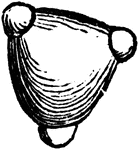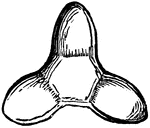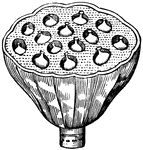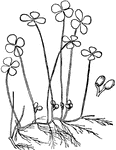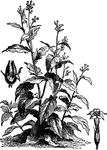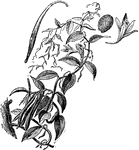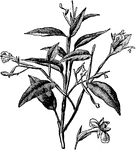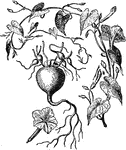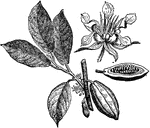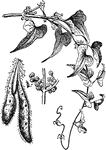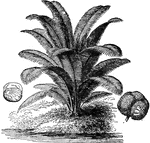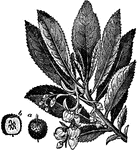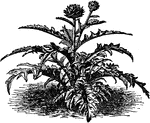
Agave
A plant with large fleshy leaves that yields many products. It is a tall plant with a spiny top that…

Aloe
A plant that varies in size but always has thick fleshy leaves that are spined. It also contains a juice…
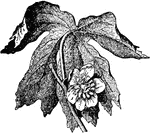
Mayapple
A North American poisonous herb. The plant itself usually has a blossom between two large green fleshy…

Polllinia of a Milkweed
Pollen, a pair of pollinia of a Milkweed, Asclepias, attached by stalks to a gland.
Polllinia of a Orchis
Pollinium of an Orchis (Habenaria), with its stalks attached to a sticky gland.

Pistil of Saxifrage
Two simple carpals or pistil-leaves, united at the base only, cut across both above and below.

Pistil of common St. John's-wort
Compound 3-carpellary pistil of common St. John's-wort, cut across: the three styles separate.
Pistil of shrubby St. John's-wort
The same of shrubby St. John's-wort; the three styles as well as ovaries here united into one.
Pistil of Spiderwort
Compound 3-carpellary pistil of Tradescantia or Spiderwort; the three stigmas as well as styles and…
Pistil of Sandwort
Pistil of a Sandwort, with vertical and transverse section of the ovary: free central placenta.

Ovary of Frost Weed
Cross section of the ovary of Frost-Weed (Helianthemum), with three parietal placenta, bearing ovules.
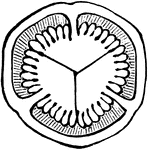
Hypericum graveolens
Cross-section of an ovary of Hypericum graveolens, the three large placenta meeting in the centre, so…

Ovule of a Magnolia
Three early stages in the growth of ovule of a Magnolia, showing the forming outer and inner coats,…

Silene Pennsylvanica
Longitudinal section of flower of Silene Pennsylvanica, showing stipe between calyx and corolla.
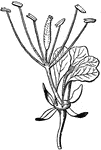
Flower of a Cleome
Flower of a Cleome of the section Gynandropsis, showing broadened receptacles to bear petals, lengthened…

Alga
Magnified view of some of a simple fresh water Alga, the Tetraspora lubrica, each sphere of which may…

Rhubarb-plant
Some cells from stalk of Rhubarb-plant, three containing chlorophyll; two (one torn across) with rhaphides.
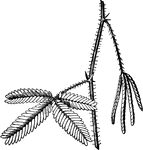
Sensitive Plant
Piece of stem of Sensitive Plant (Mimosa pudica), with two leaves. the lower open, the upper in the…

Telegraph-plant
Portion of stem and leaves of Telegraph-plant (Desmodium gyrans), almost of natural size.
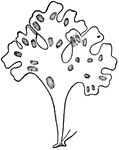
Chondrus Crispus
Small plant of Chondrus crispus, Carrageen Moss; the spots represent the fructification, consisting…
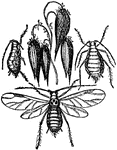
Aphis Avence
Grain or oat-plant louse, does much injury to grain, and especially to oats, but is also found on wheat,…

Aphis Gossypii
Also known as the Cotton-plant louse, is a great nuisance to the planters, especially when the plants…

Moth Lantern
From the well known nocturnal habits of moths, and the certainty of their being destroyed by a light,…
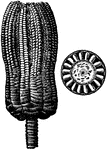
Fossil Encrinite
When the remains of an animal or plant are exposed to the air or buried in dry earth, they generally…
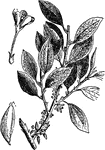
Coca
The coca plant is the source of the coca leaf used in medicine and in the production of cocaine
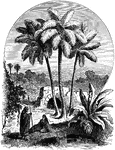
Palm Tree
Palms are one of the most well-known and extensively cultivated plant families. They have had an important…

Sugar Cane
Sugar Cane is probably a native to India, but is now extensively cultivated throughout the tropical…

Tea Plant
Tea consists of the dried leaves of a number of evergreen shrubs, natives of China or thereabouts. Tea…

